It’s the first week in May as an intermittent hailstorm pummels the polycarbonate roof of Incredible Farm’s greenhouse. Head grower Mike is showing me the cycle of how they produce every bit of substrate they use in their indoor veg growing spaces, from seed to harvest.
“This is where our compost bays are, but to see the whole process, we have to start outside, with the cows,” he says.
Livestock At Work
I follow him out to a small open shed, and he nods towards the two red-headed Mangalitsa piglets looking very cozy on a bed of straw.
“We’ve got two little helpers”, he explains, walking me out to the first shed. “We just got these yesterday, and this year, the process will be starting with them.”
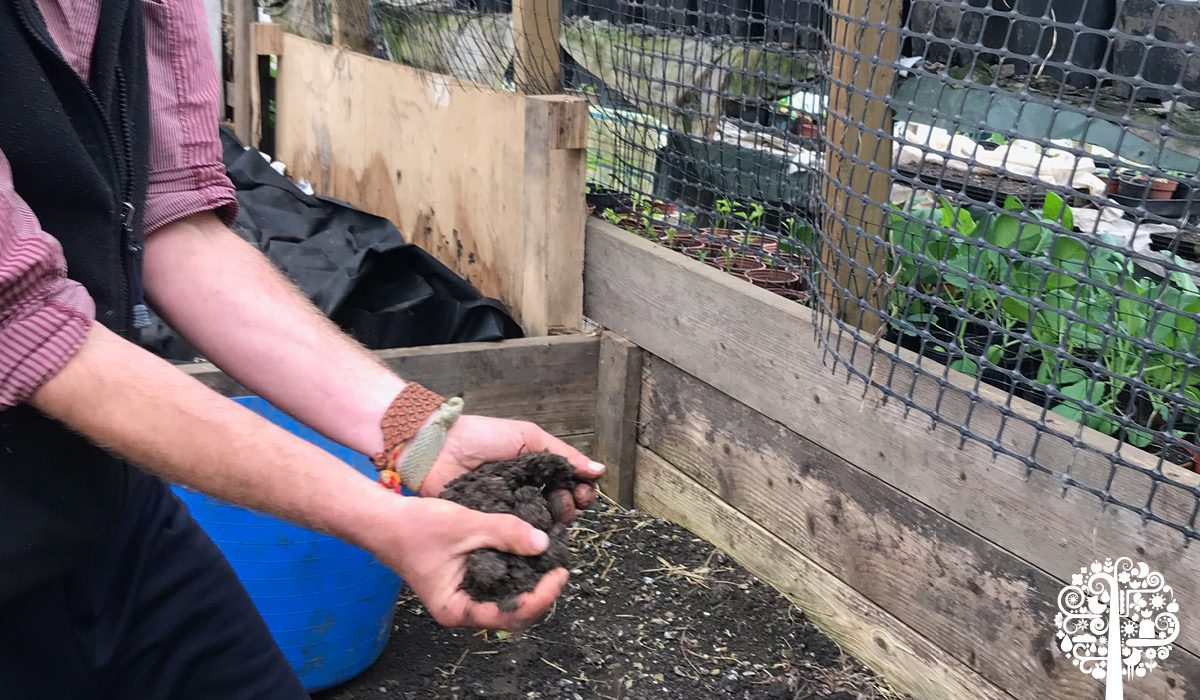
We walk round to the cowshed, next door. The cows overwinter in the shed, and layers of fresh straw are added regularly throughout the colder months. Over time, the layers have built up to a chunky ‘compost base’ around 3m x 6m and about a meter deep. The heaps provide the cows with a deep insulating ‘hot bed’ when the temperatures outside drop.
“Soon, we’ll put the piglets in here, and they’ll start the composting process, adding their own muck and rootling about,” explains Mike. “This breed of pig is very good at digging, so by scattering some peas in here; they’re going to be encouraged to dig. They’ll turn it over and aerate it for a few months, and we’ll see how it works. Once that’s happened, we will turn this into one big hotbed, moving it by hand into the indoor space to protect it from the elements and any nitrate runoff. This time last year, we dug this out, spread it in a polytunnel, and covered it with plastic to speed up the breakdown, and then we planted squash in there – into relatively fresh manure. There was what looked like a bit of a calcium deficiency, but the results were surprisingly good given the young age of the compost.”
Compost Brewing
The cowshed is next to the greenhouse which contains three compost bays, each brimming with three cubic meters of black gold. The one nearest the shed has the year one mix: straw and cow muck, nitrogen-rich chicken waste, leftover hay, and layers of woodchip, slowly breaking down.
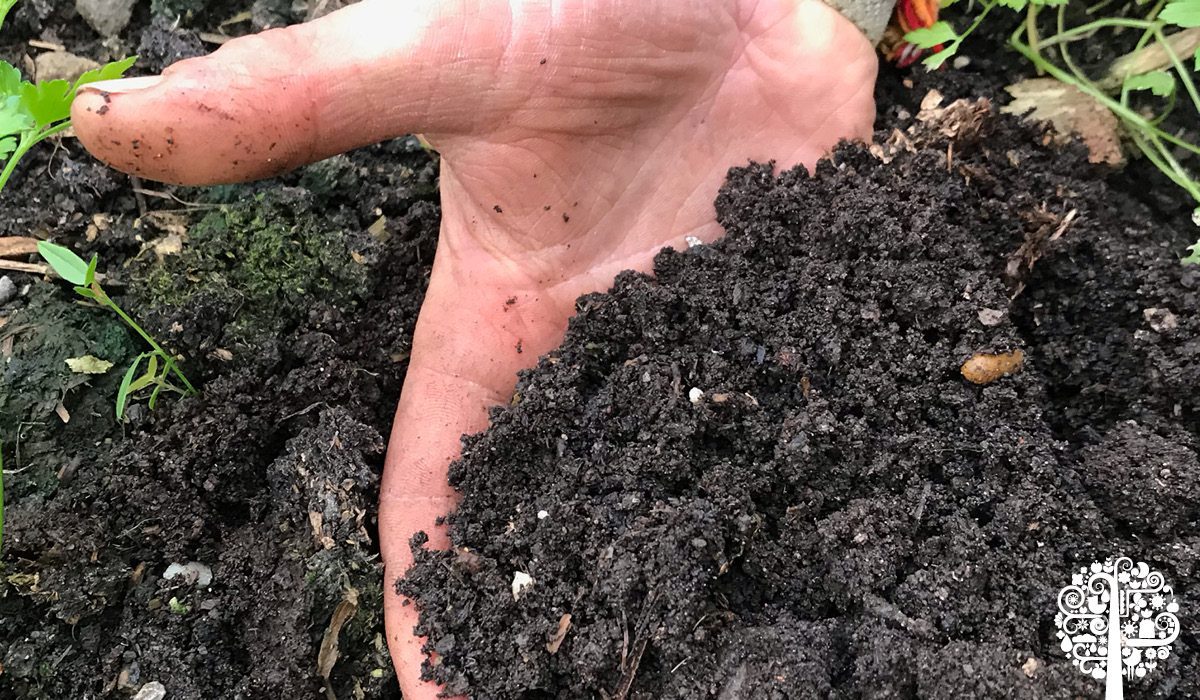
Mike lifts a couple of chunks to reveal the white mycelium layers developing within the warming mix.
“The mycelium is coming in from all around and through the woodchip that is added,” he says. “This can be done on a smaller scale, but it needs to be about one cubic meter minimum – so if you were to put four pallets together, you could do it.”
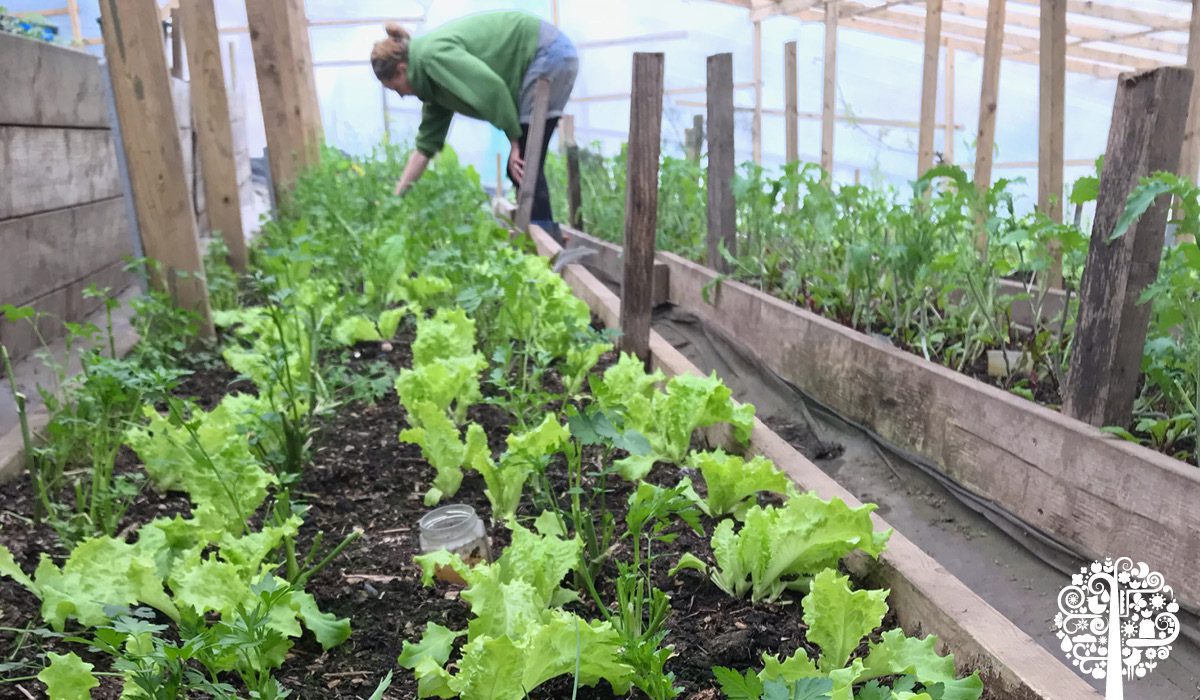
Incredible Farm has worked with biochar in the past, but it doesn’t currently have the capacity. Mike’s keen to try soaking the wood in the urine captured from the compost toilets, which would then slowly get released into the soil. Because it’s so porous, it provides a good surface area for mycelium and microorganisms to develop.
Experimental Substrates
At Incredible Farm, they are always keen to experiment and create their permaculture system. When the pigs have finished in the cowshed in a few months, they will be seconded to an outdoor, fenced-off part of the farm, where they will begin the conversion process for the next part of the outdoor growing ‘garden’ space. Last year’s pig-plowed patch is now producing salads, brassicas and fruit trees. In the West Yorkshire hills, in heavy clay soil, there is no better cultivator.
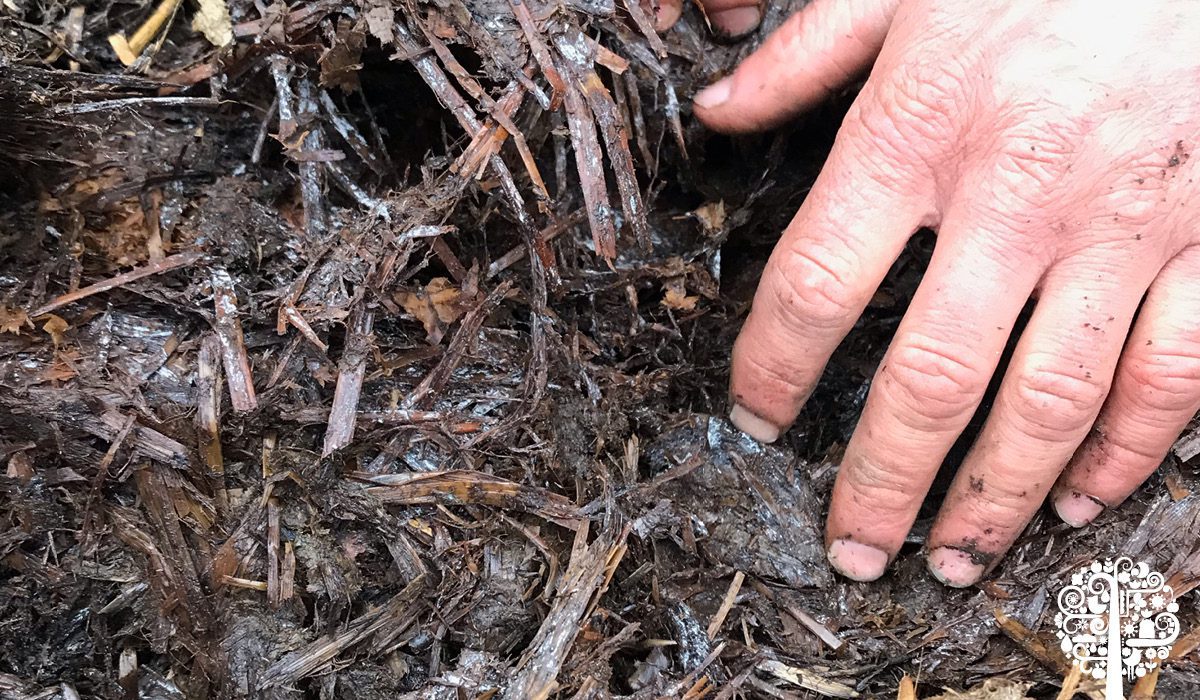
“We use the heat from the compost to [warm] the greenhouse. This is what’s helped stop our tomato plants from freezing (…) This stuff is about a year old,” he says to a handful of dark, crumbly compost.
One bed is a meter deep and is used for hungry plants like cucurbits and squash in the summer, although they overwinter salads in that bed as it generates enough heat from below to help them grow through the cold. In the summer, they trail the squash up to the roof to use the space more efficiently.
“We sieve off the lighter top layer and use it for plant raising, and the darker, richer stuff underneath gets added to the raised beds in the greenhouse,” says Mike.
When Mike saw how much they had to spend on seed compost to start their plant raising, he decided to make their own. The consistency within their homemade mix is not always there, but it works for their needs – and they have a lot of plants on the go. The greenhouse contains half a dozen raised beds of around ten meters long filled with greens and, of course, their homemade substrate. That’s quite an achievement.
Always Learning
They have a great system going at Incredible Farm, and it’s well thought out. It’s low tech, and their focus is on learning and teaching practical skills, using what’s there in front of them in the best way they can conceive. They look at their hilly site from as many angles as possible and adapt their methods and learning every season.
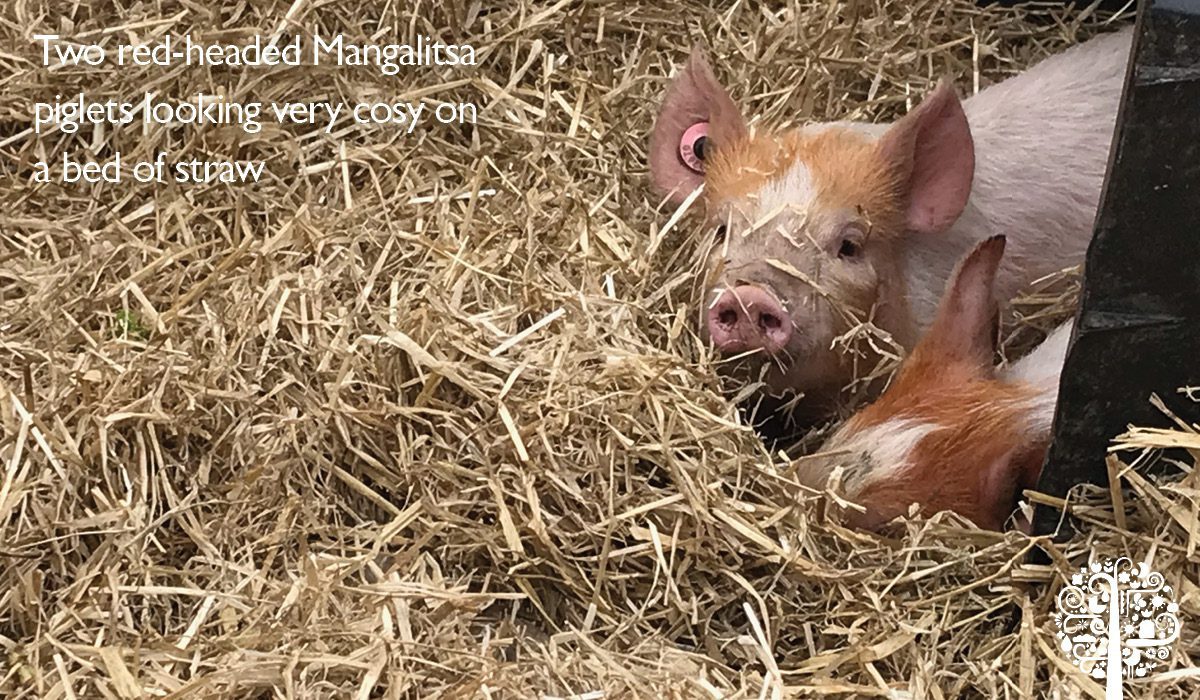
Mike and Nick, the farm coordinator, are obsessives – that’s how they get stuff done. They have focus and are consistent, and that’s what Mike thinks makes it work.
“It takes time, it takes ages to do this kind of stuff”, he says.
But they always have one eye on the long game, and that’s a major motivating factor. By combining their learning with teaching, they can see how their experience has added value to themselves and the next generation of small-scale farmers.
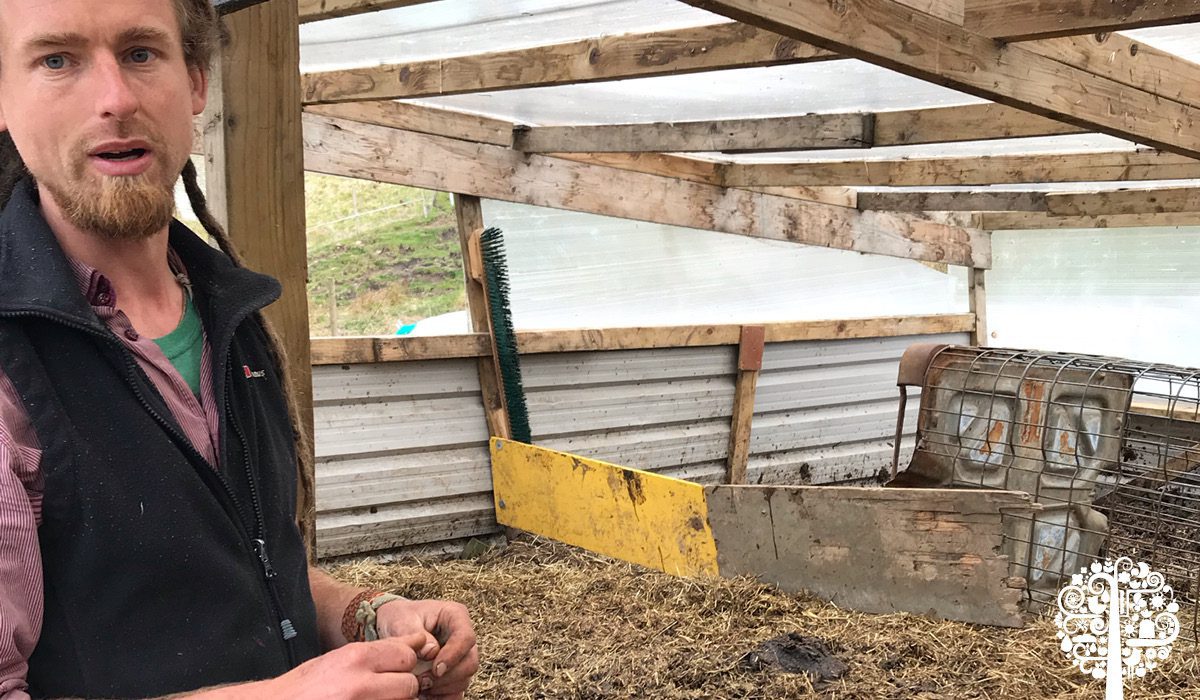
There’s something contagious about the passion that Incredible Farm brings – the buzz of volunteers in the greenhouse – I counted five the day I was there. The apprentice program they run will have two people this season; they are the compost within which the next generation of growers is growing!